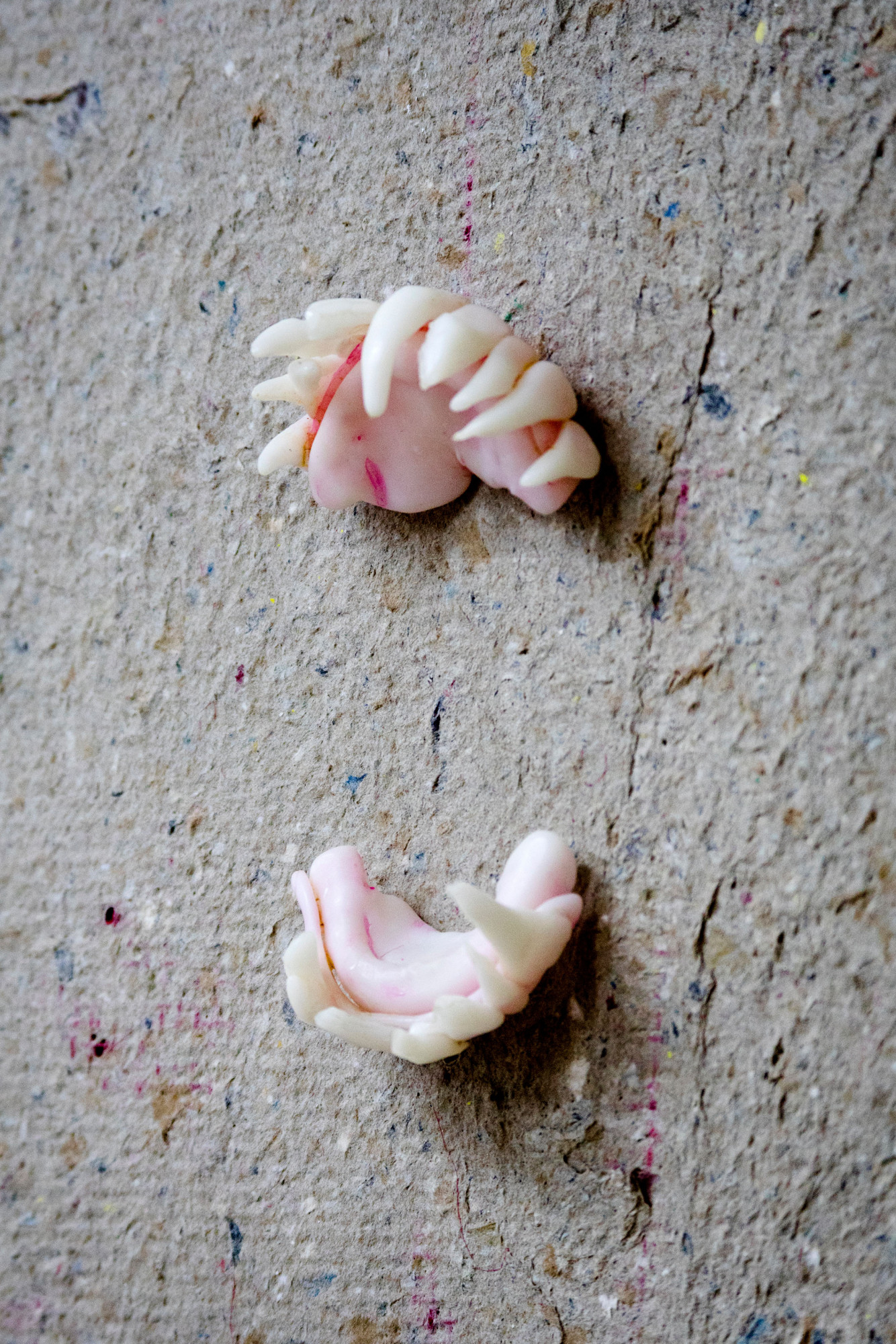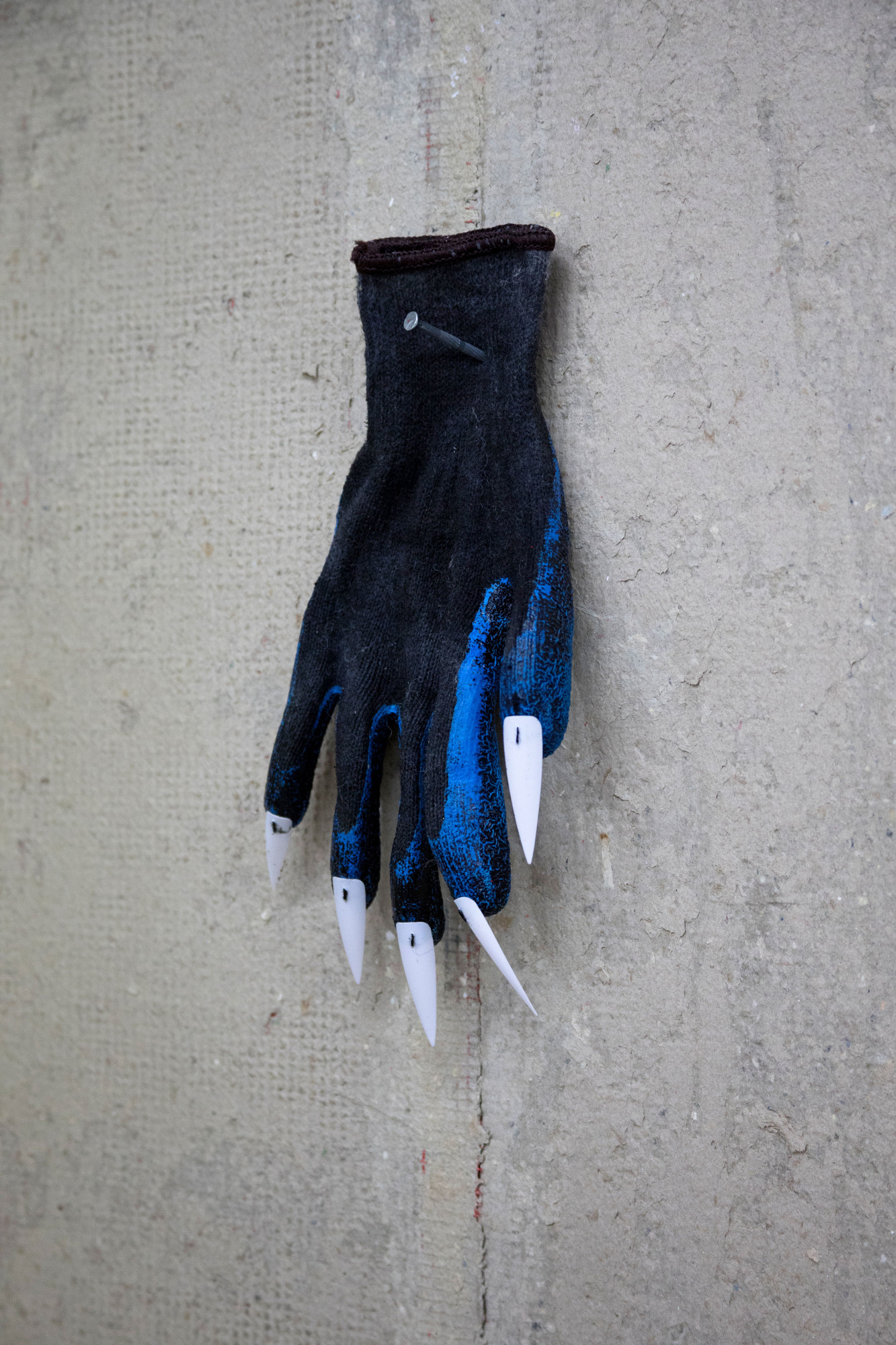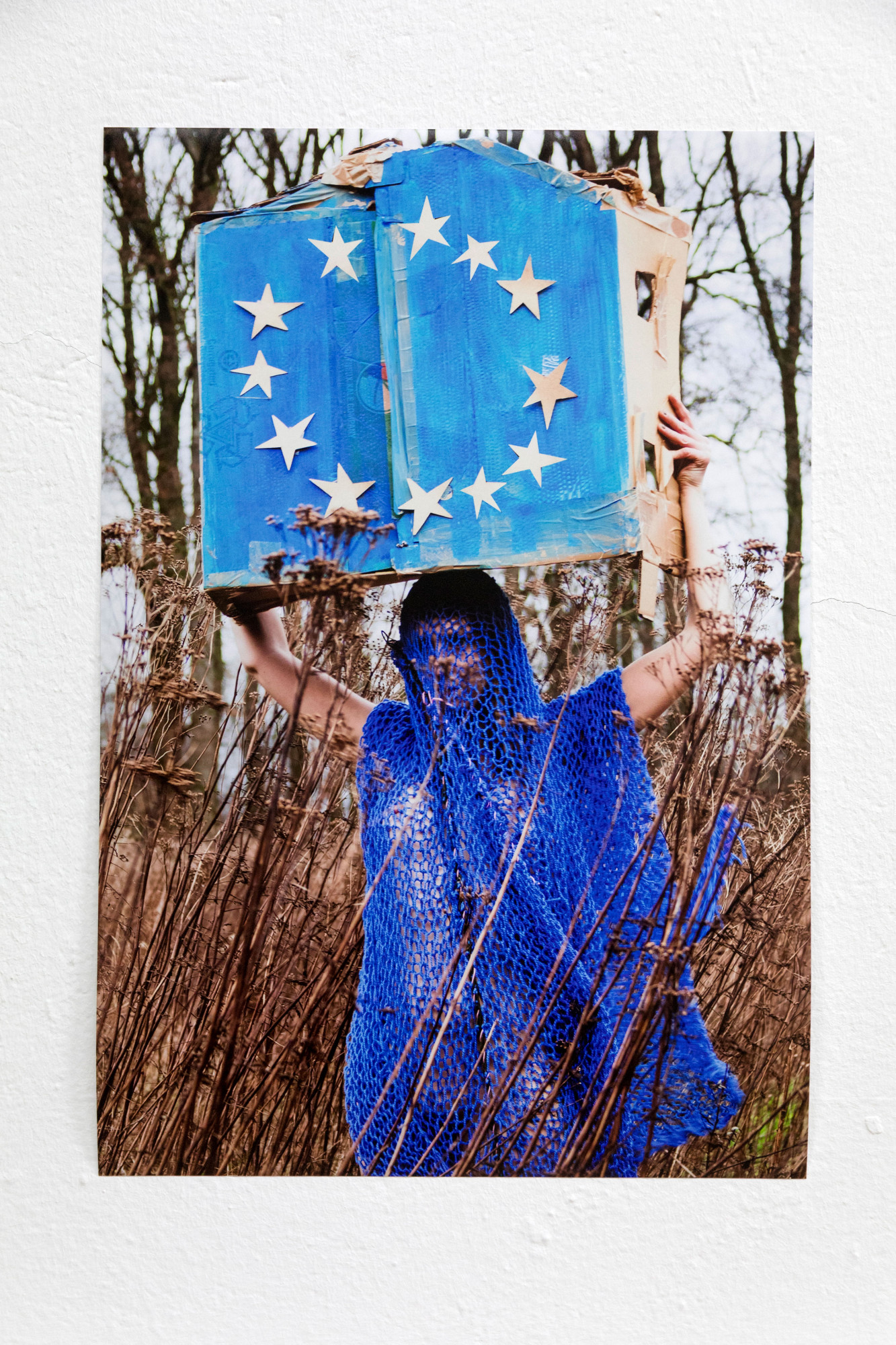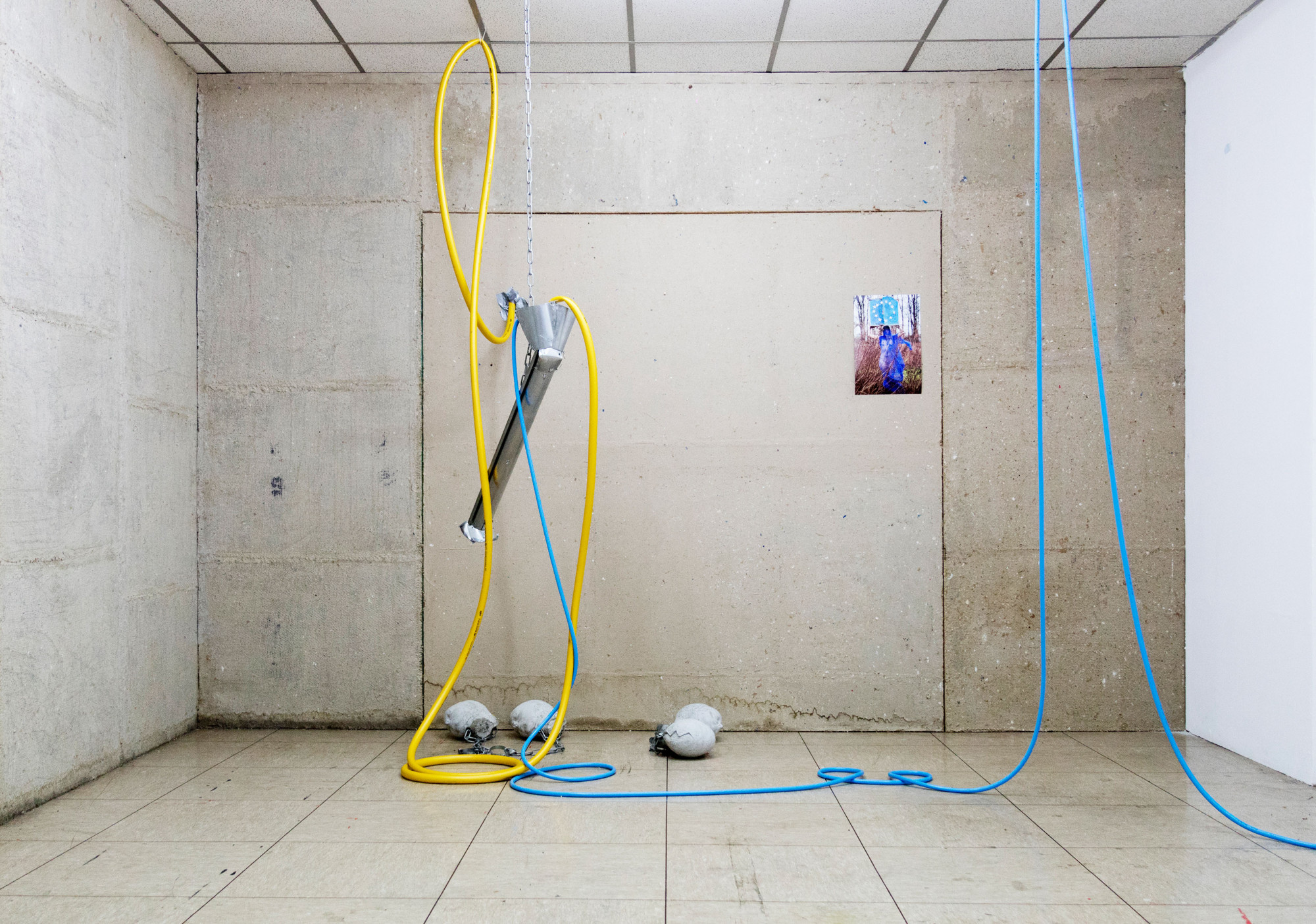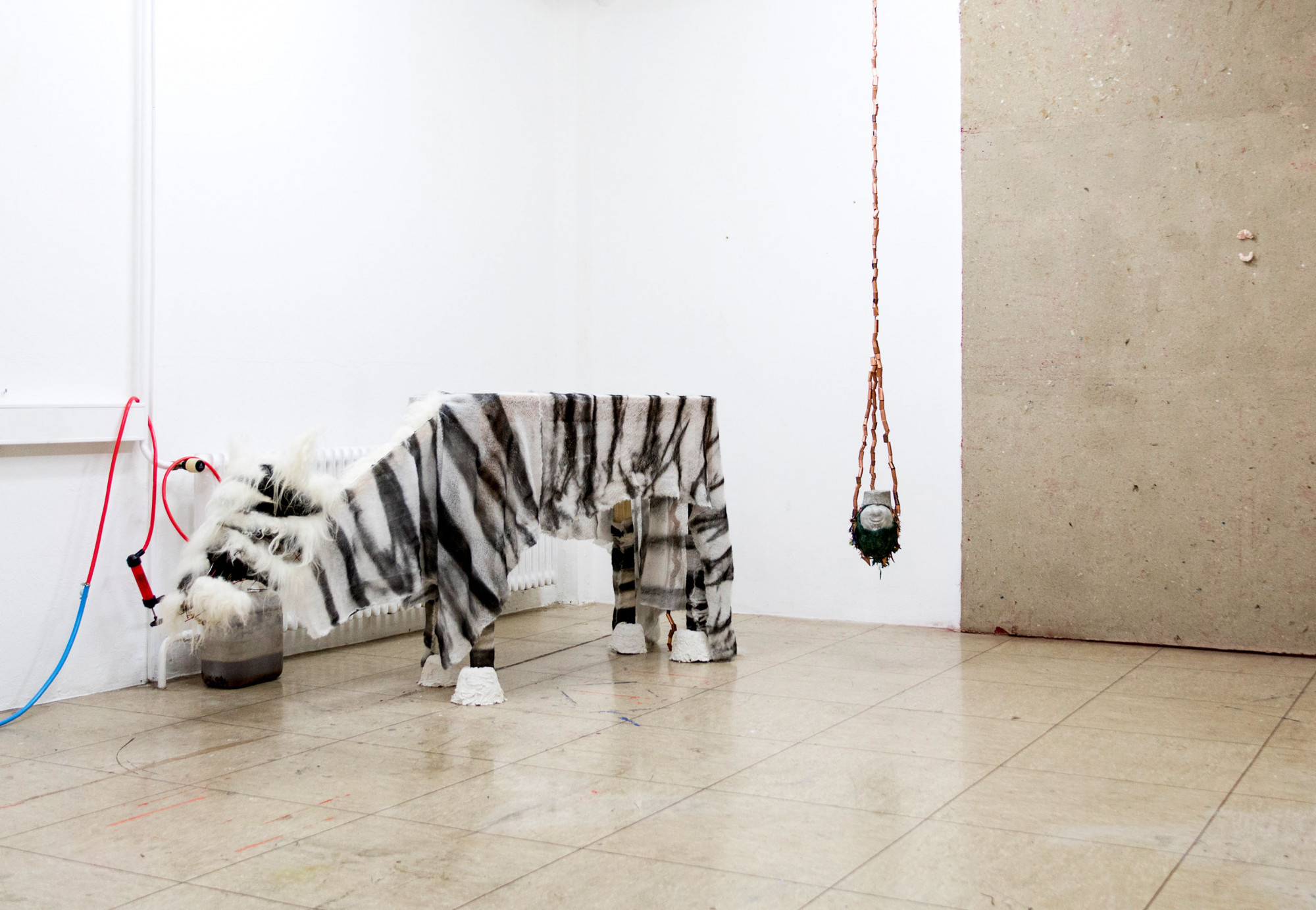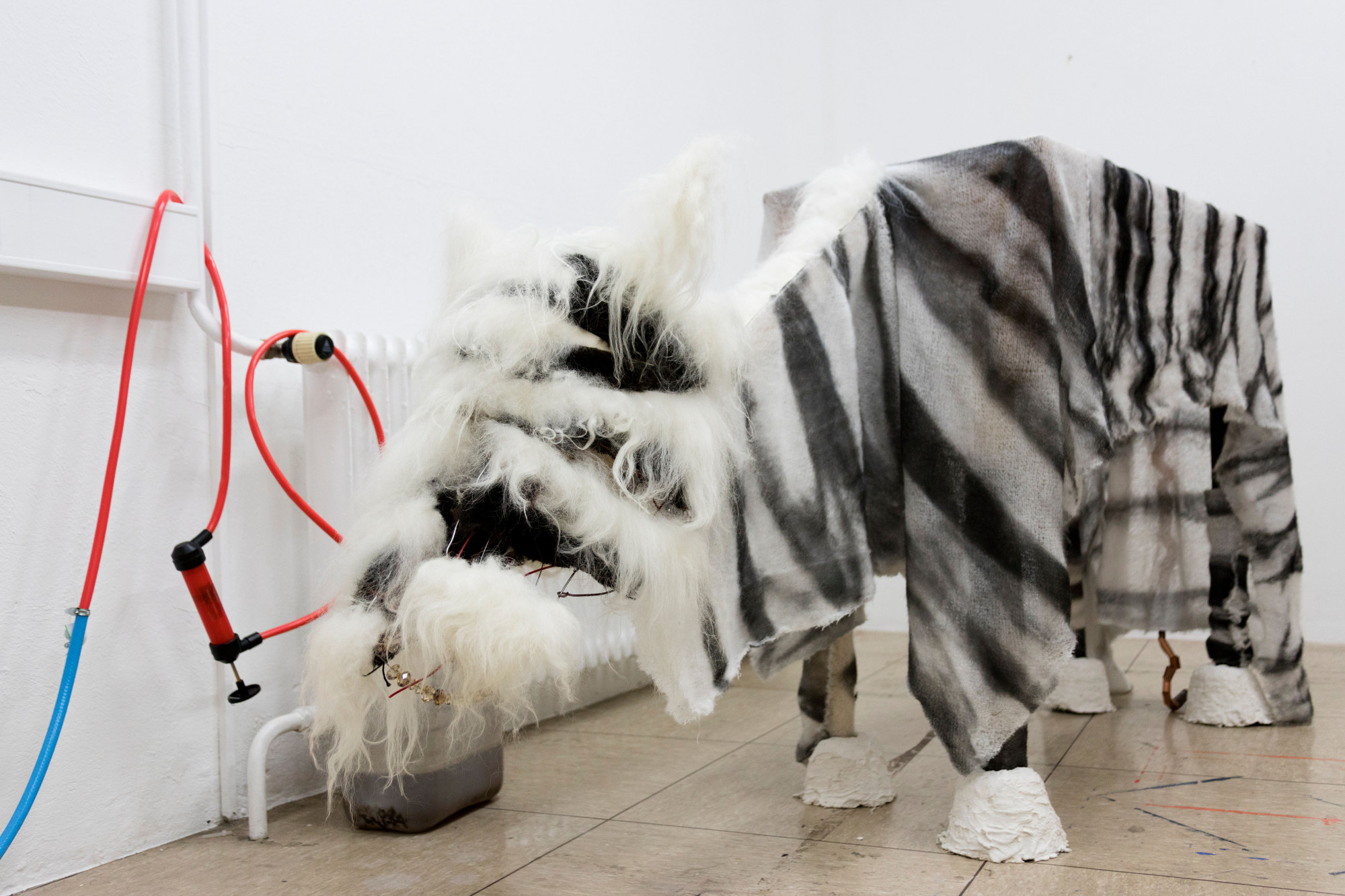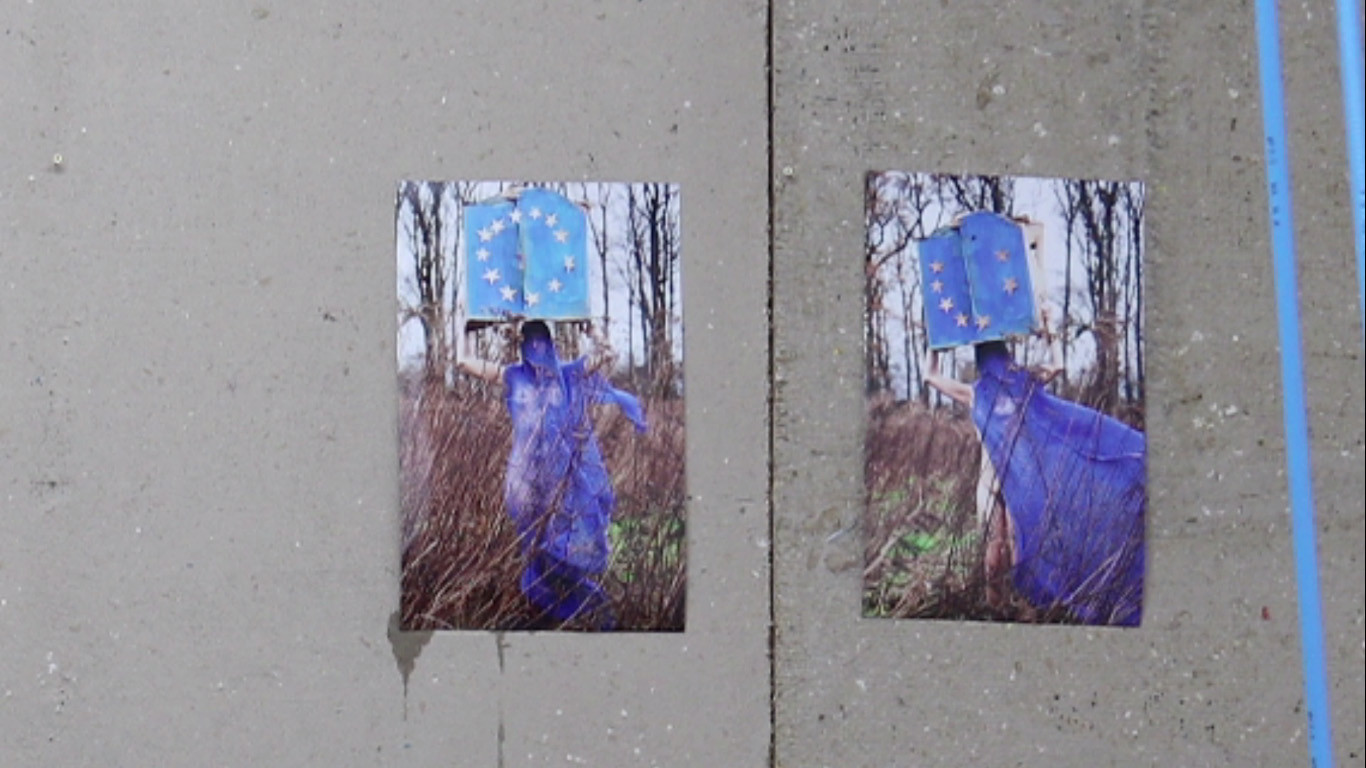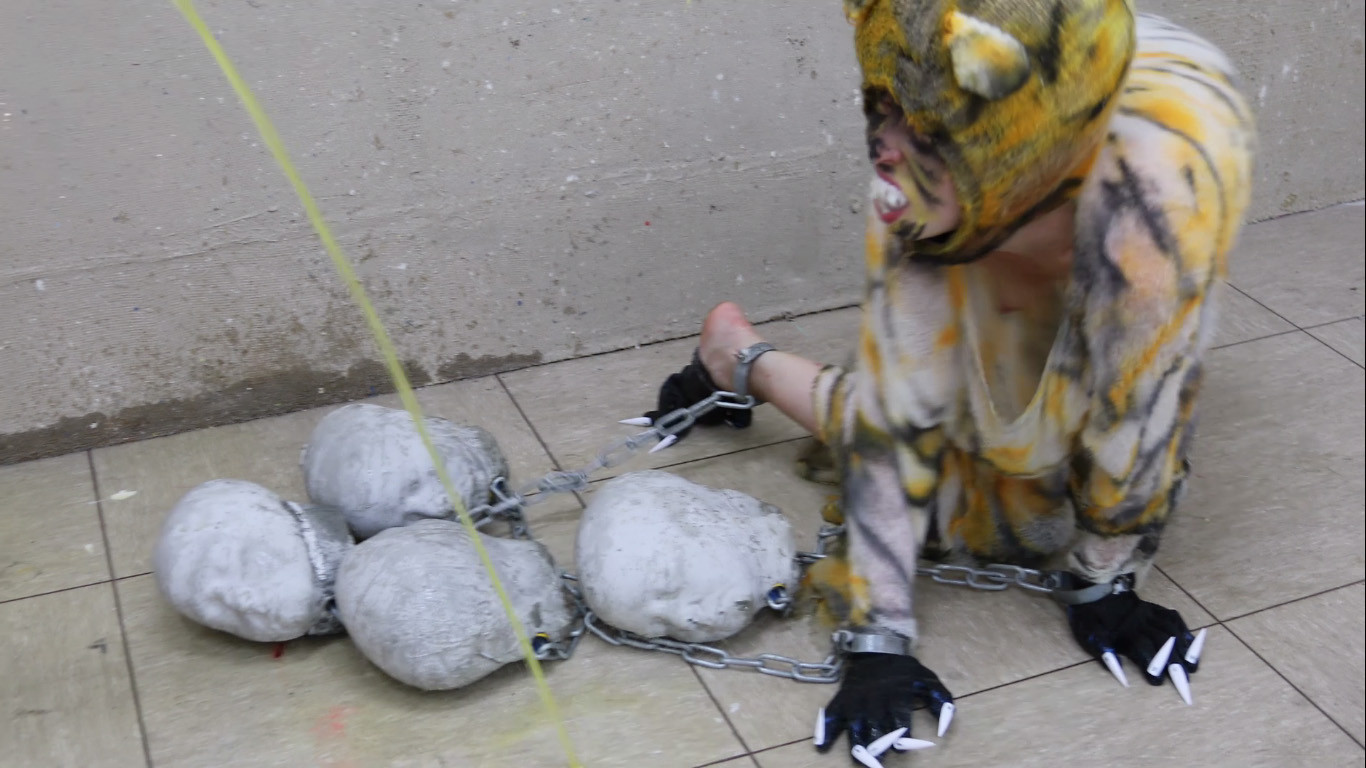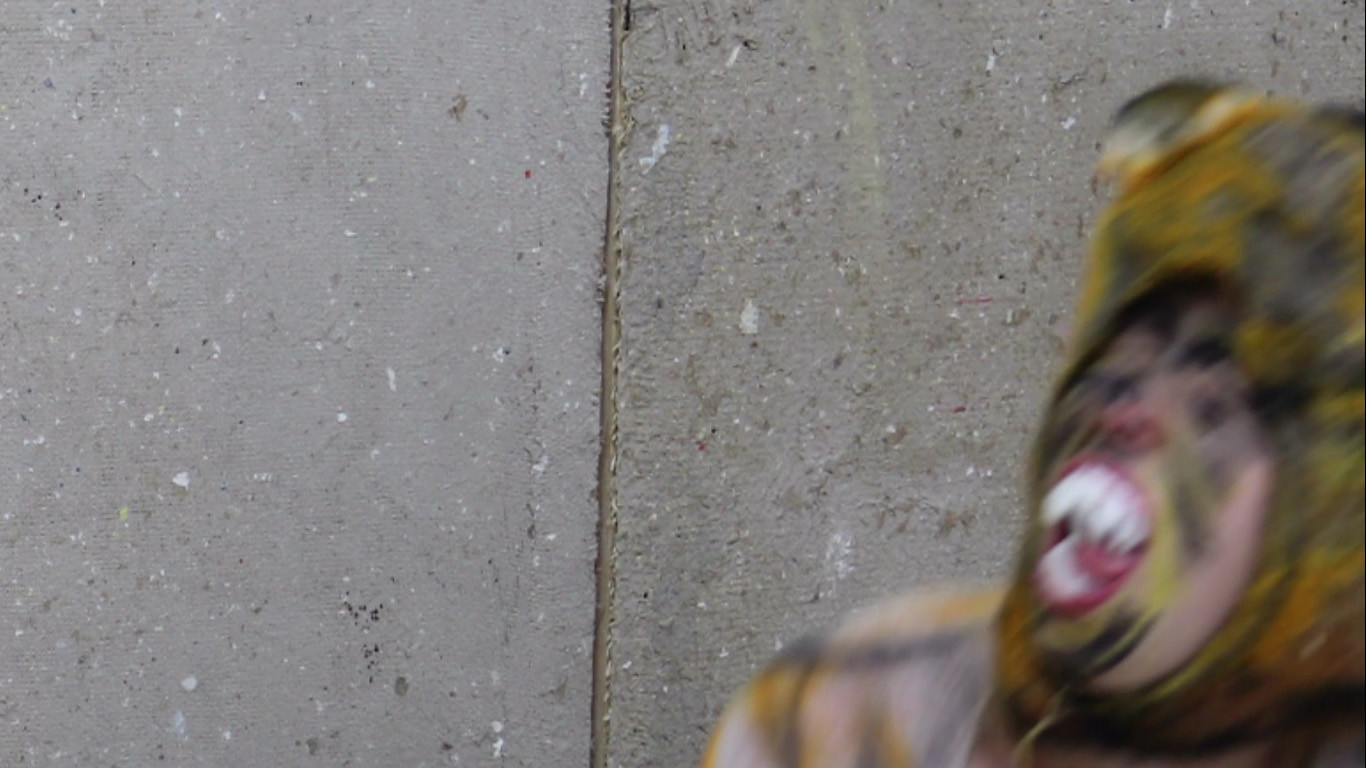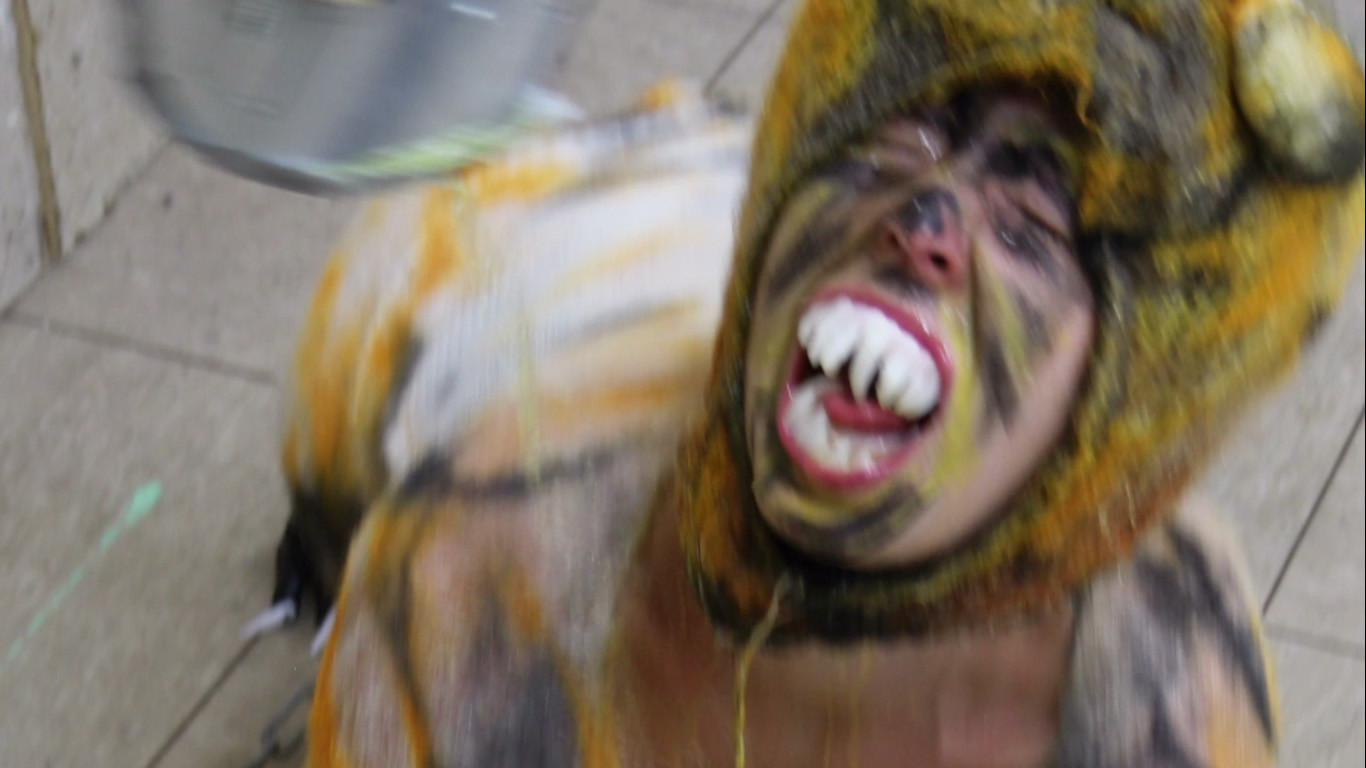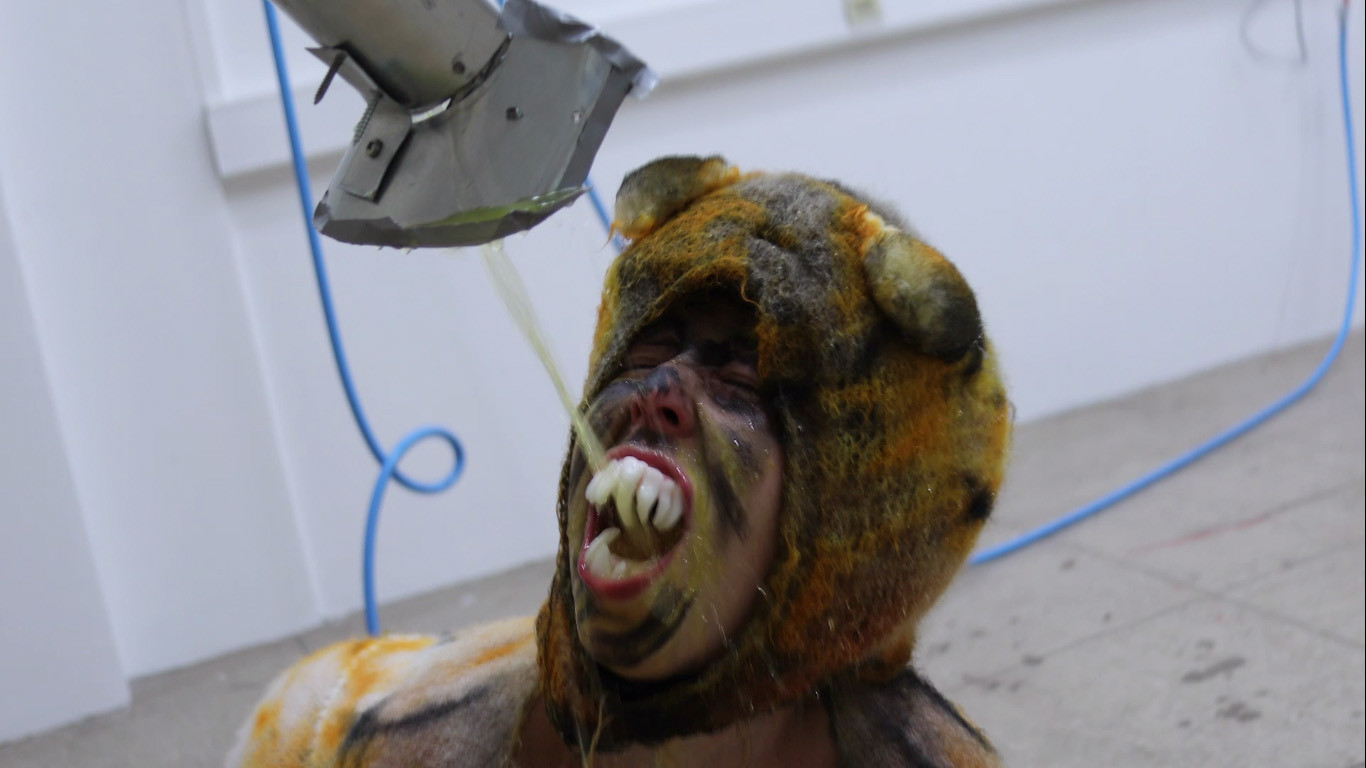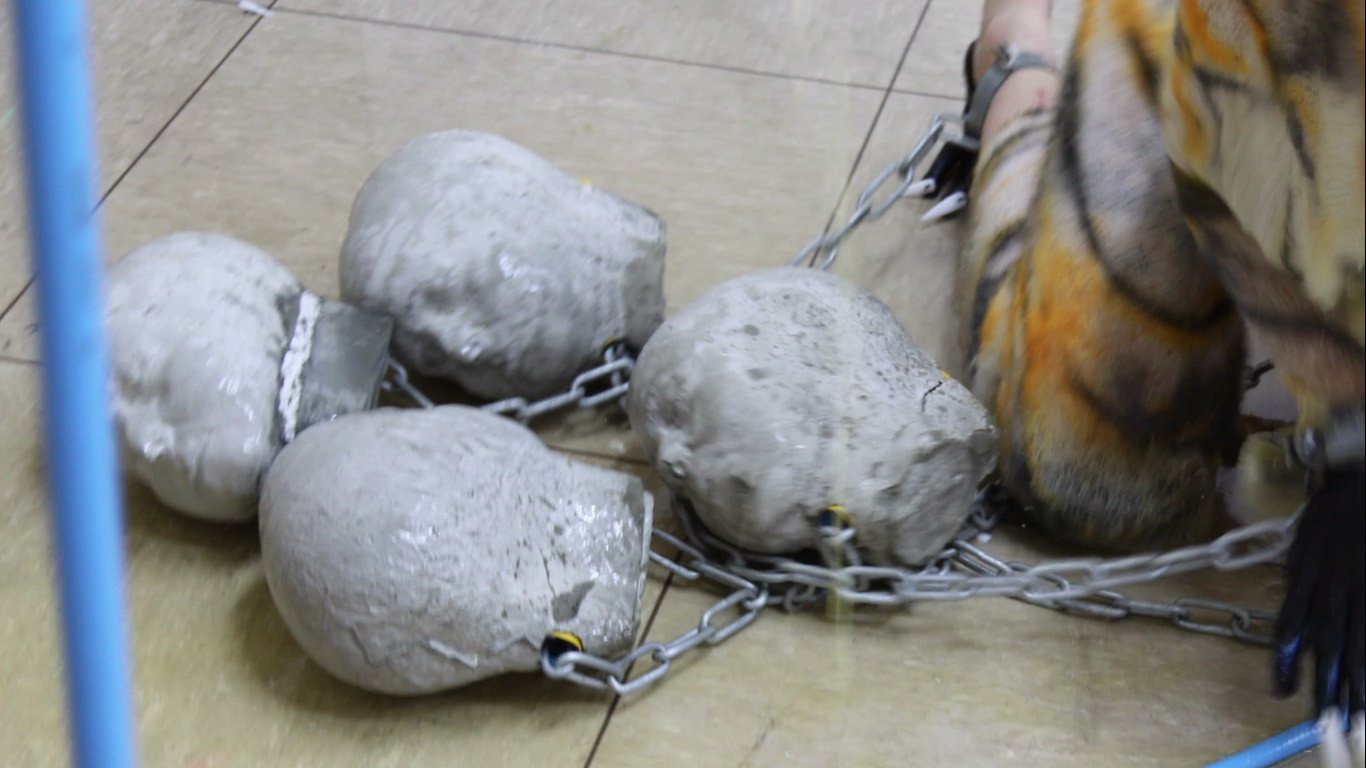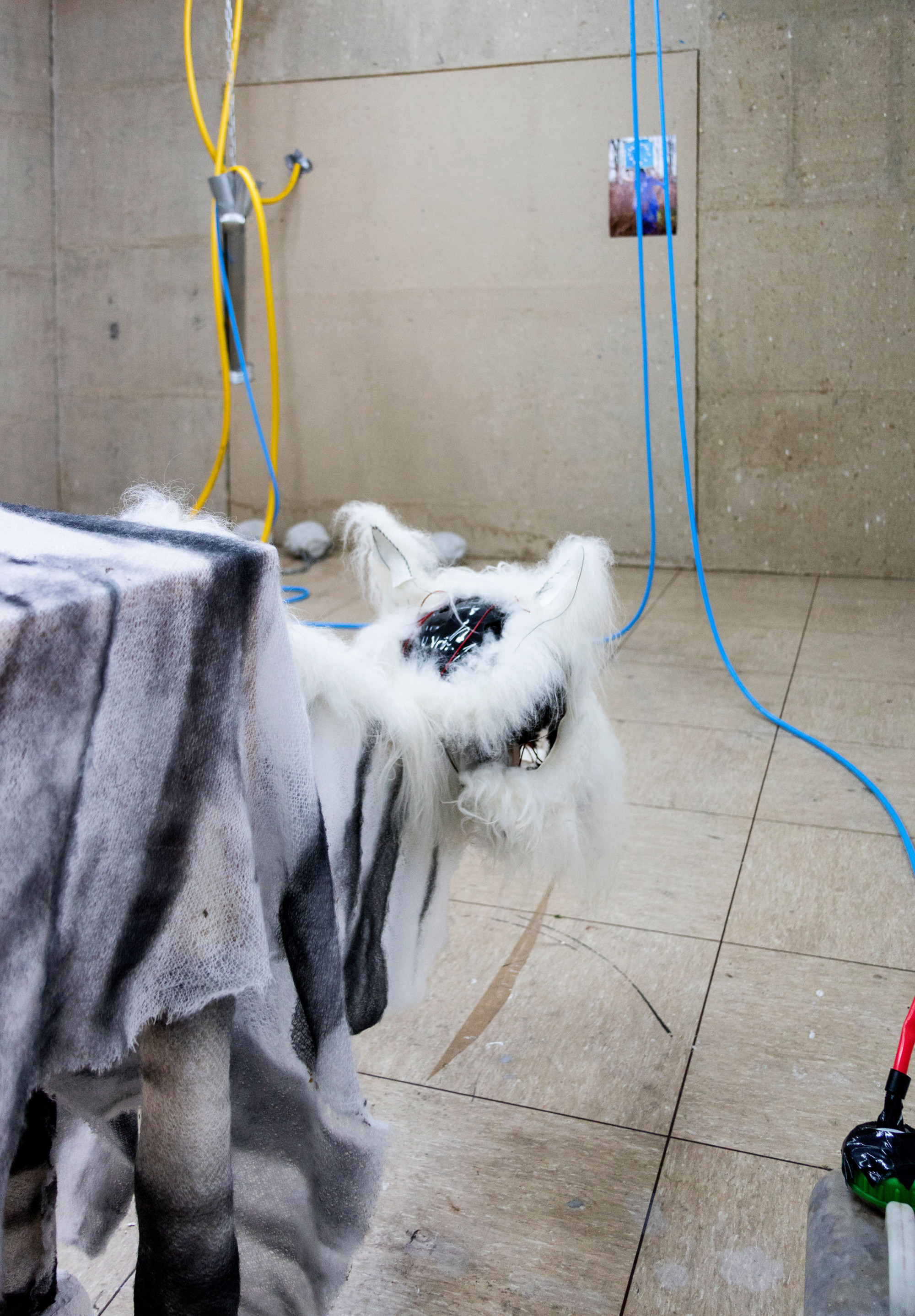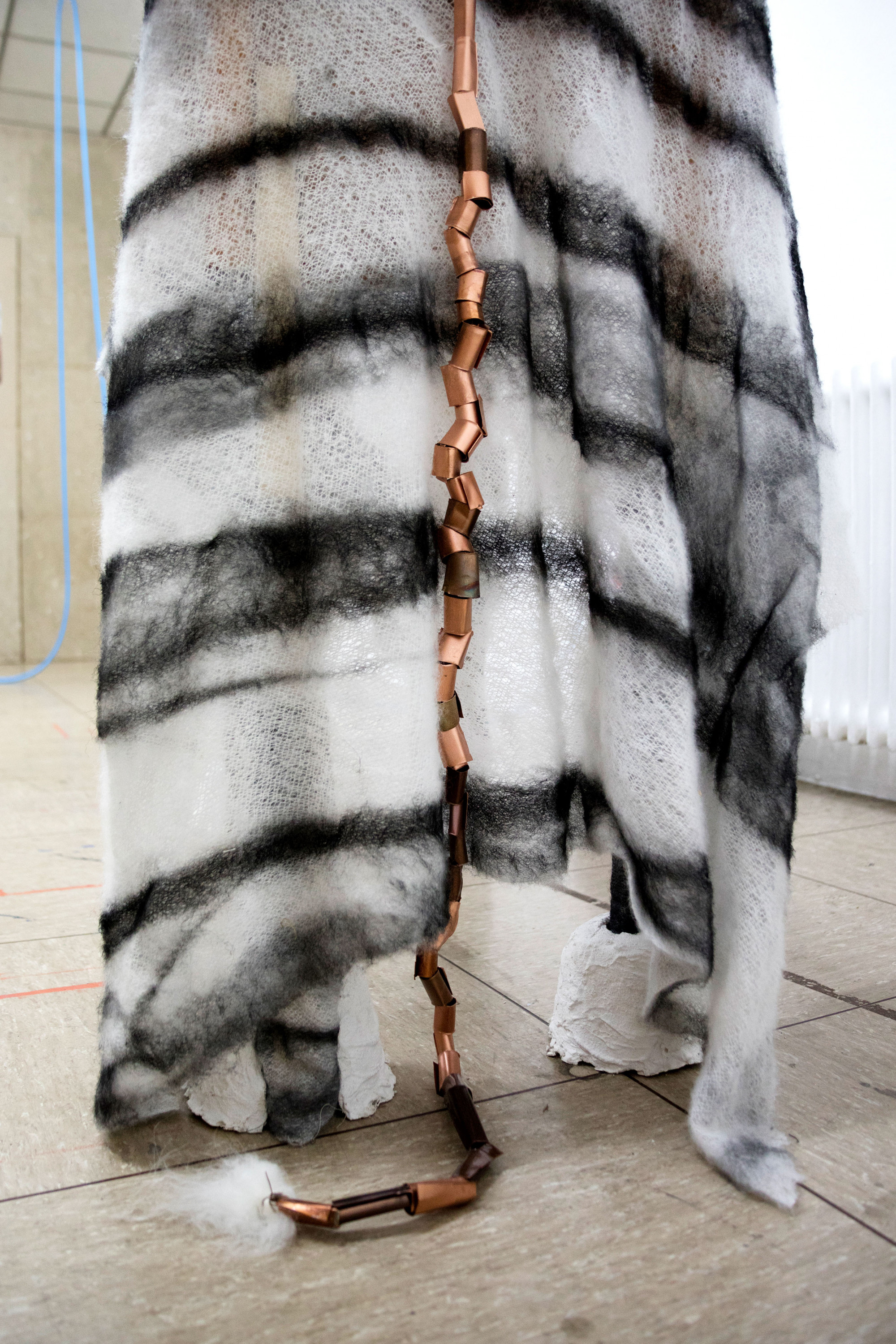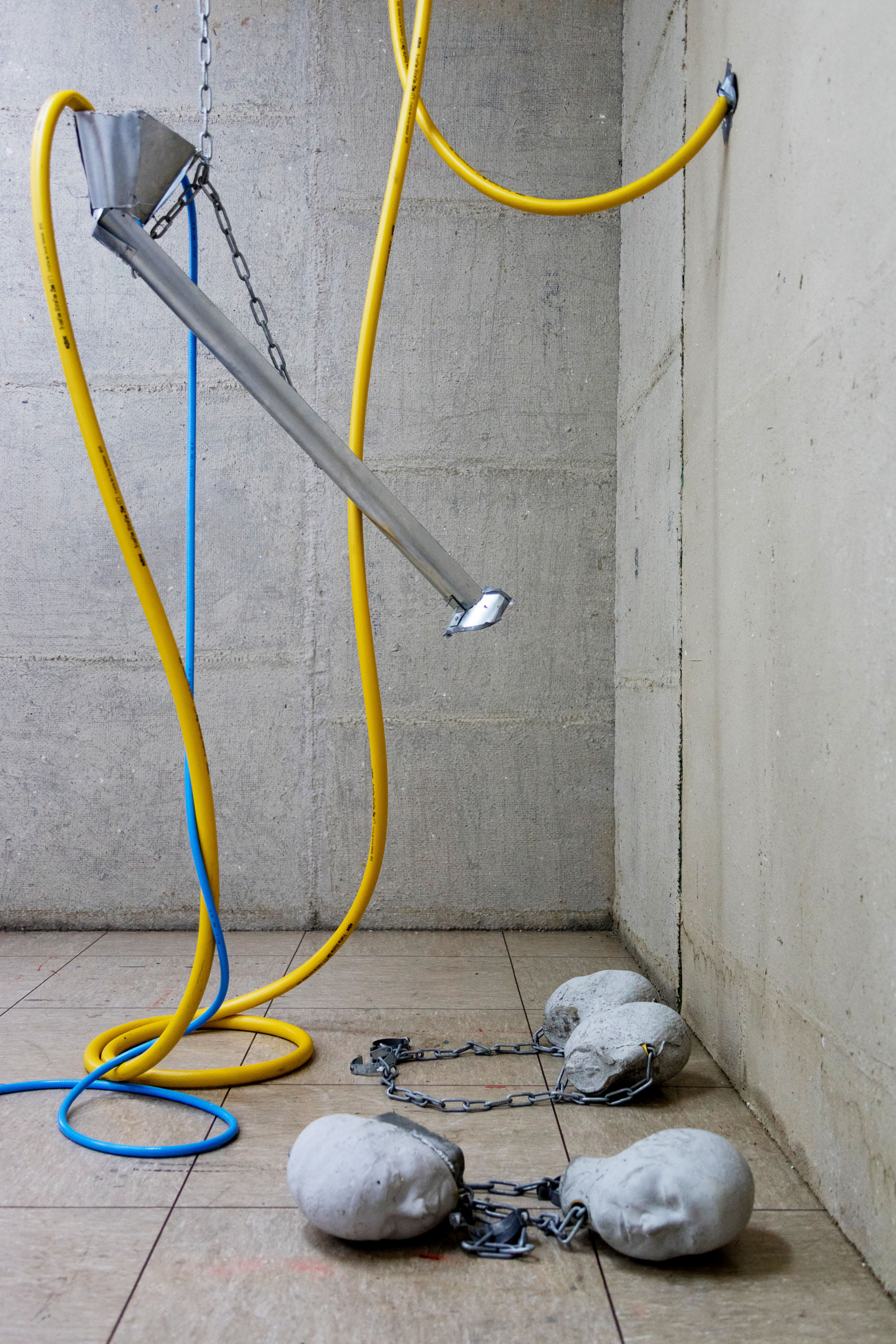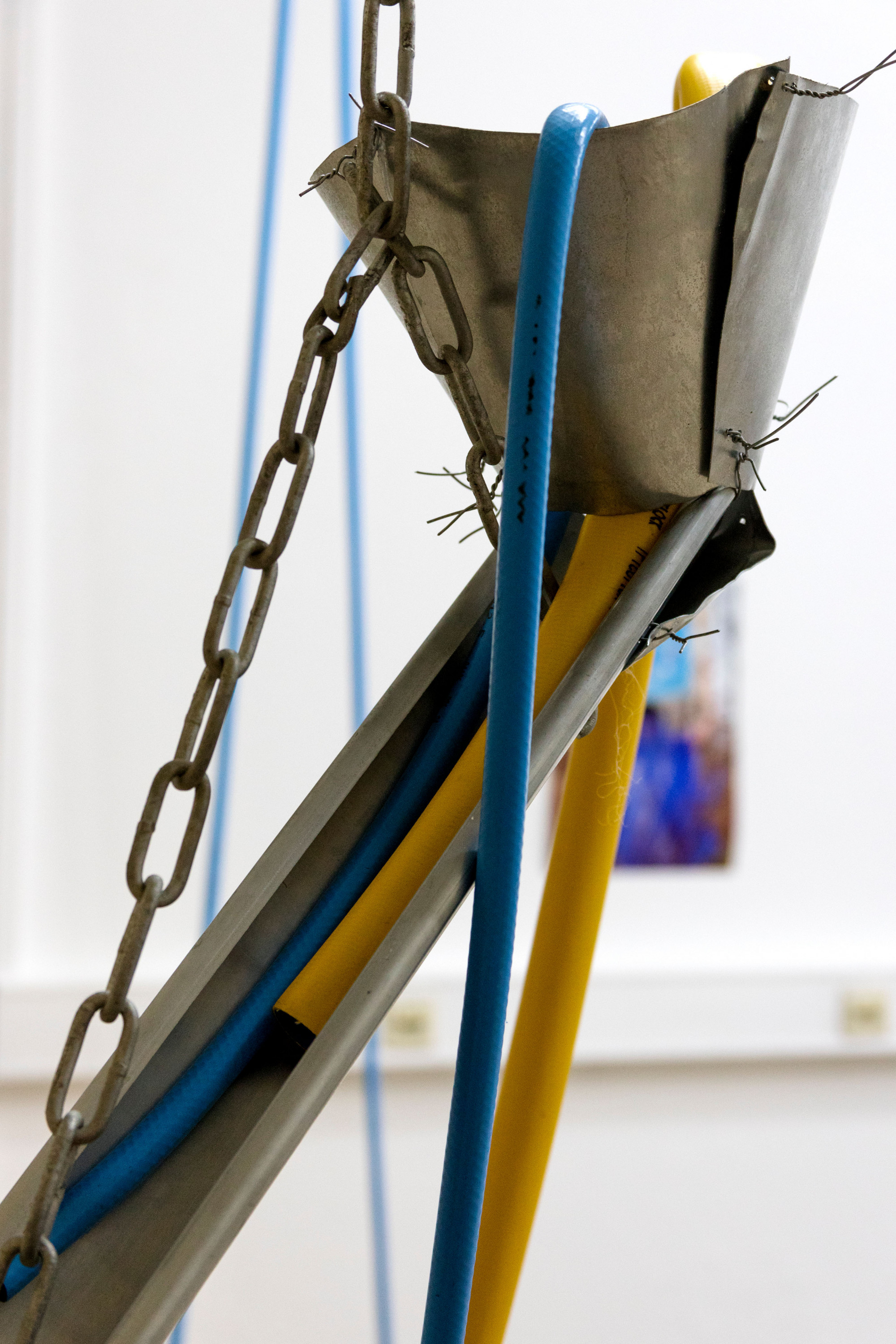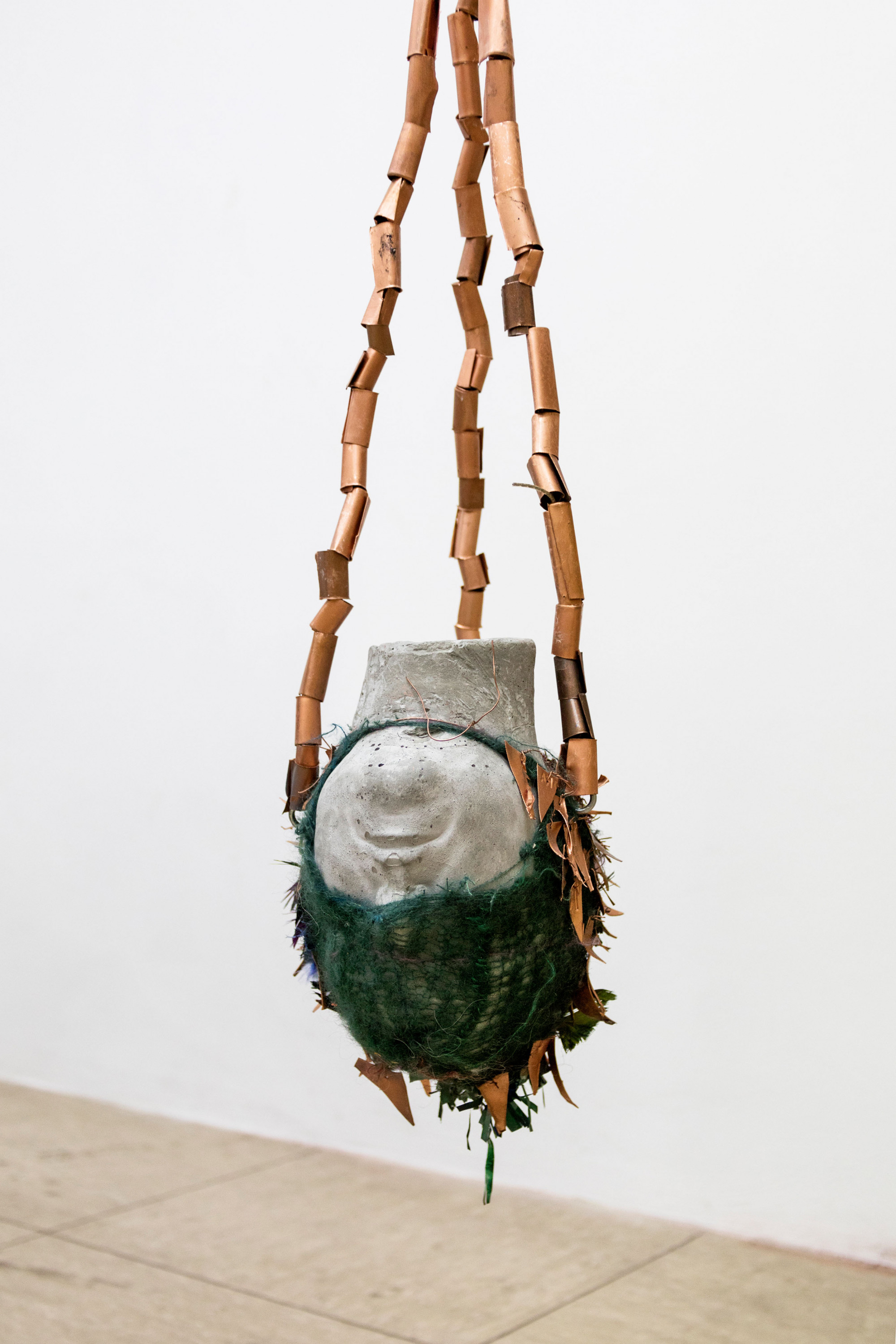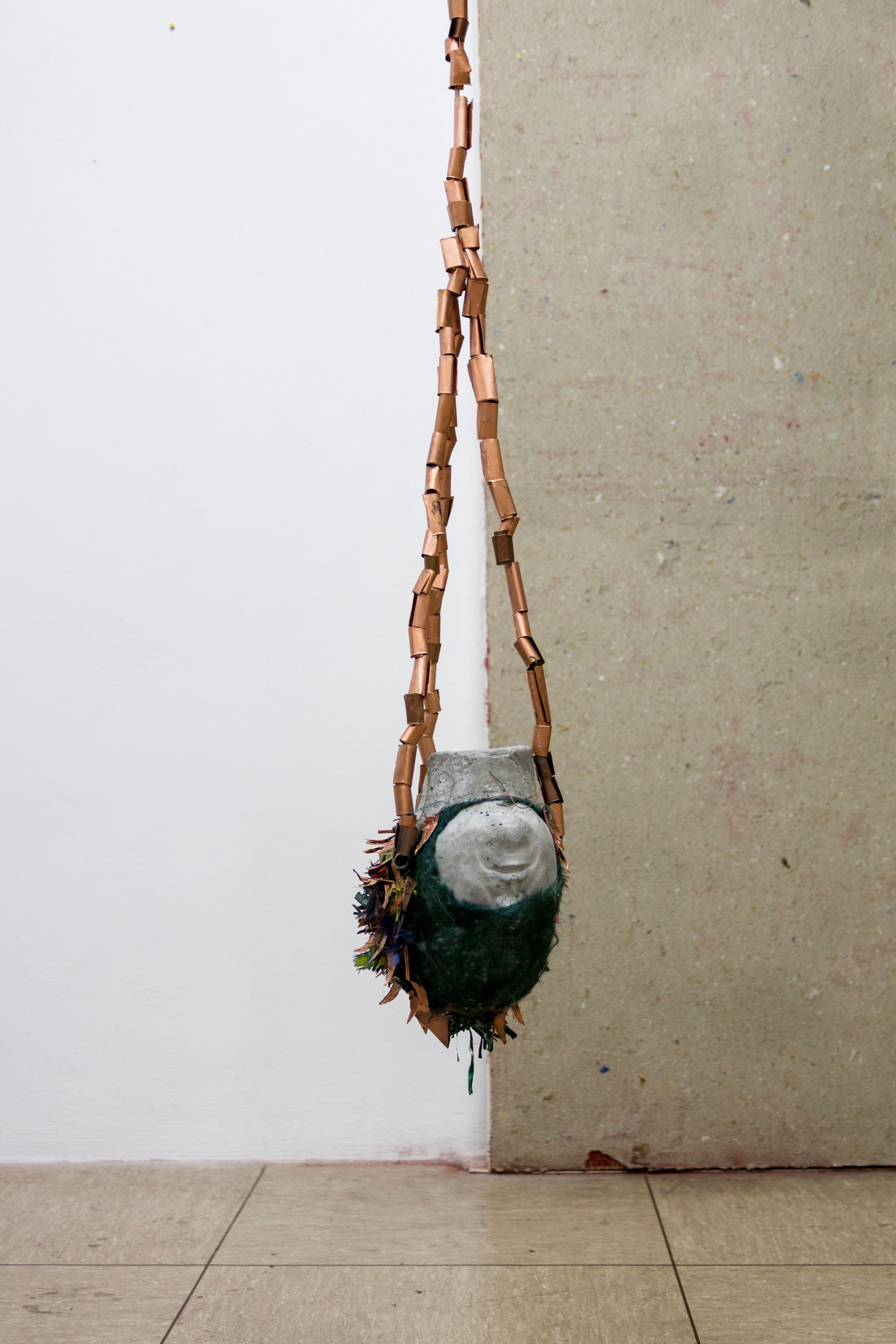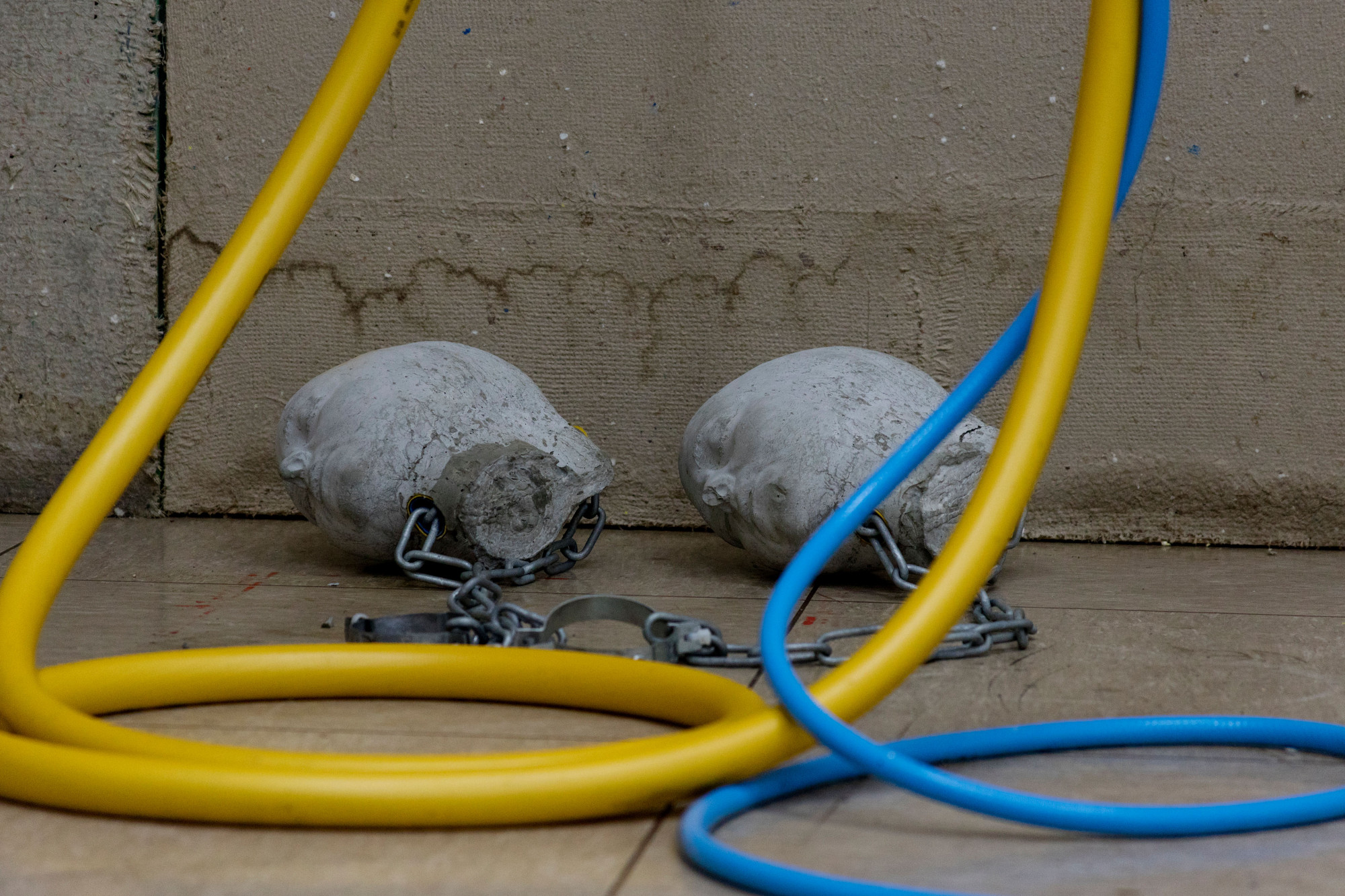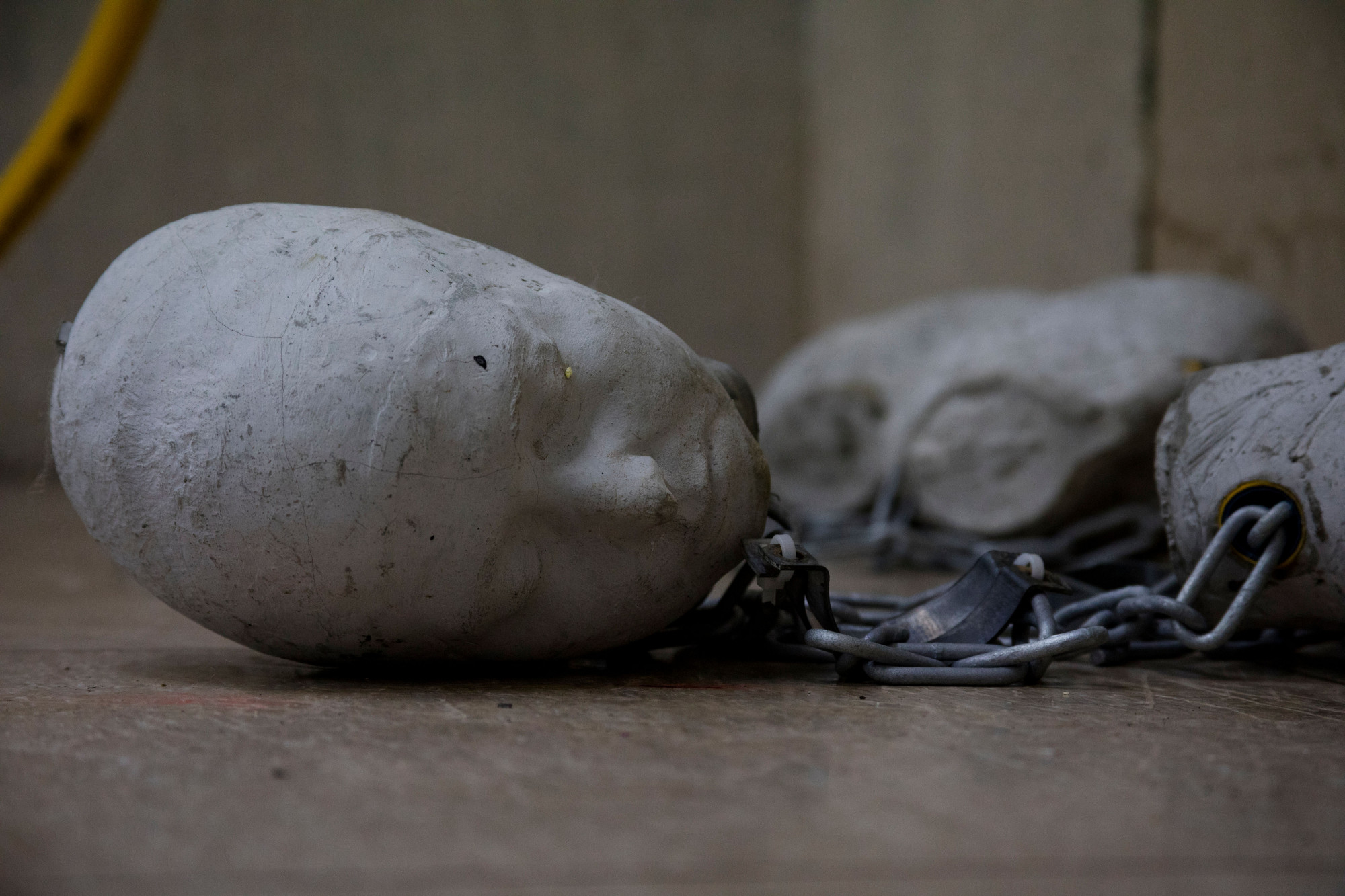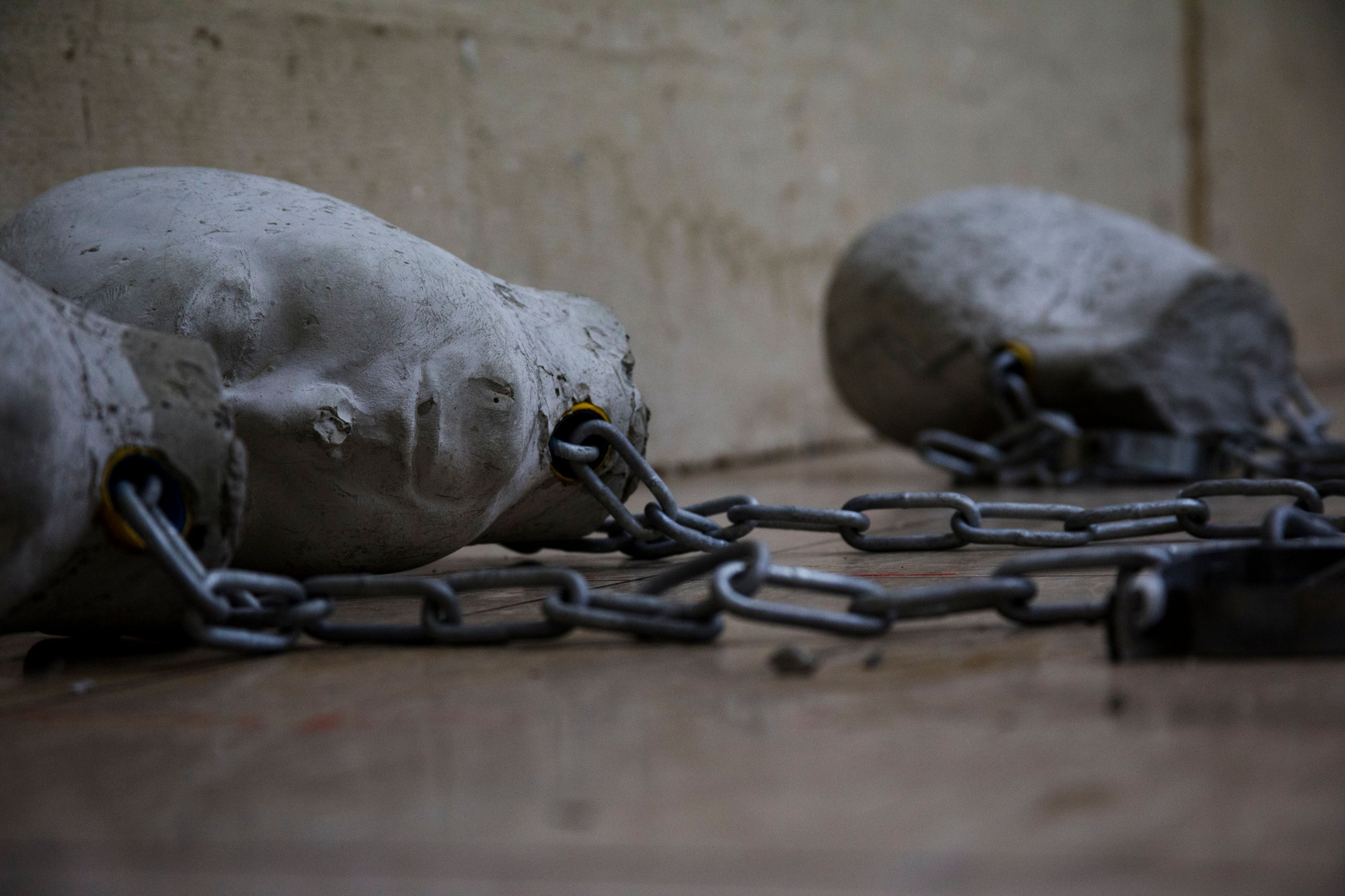Tiger Tank
The artist becomes a Tiger or rather a hybrid half way between Tiger and human, the costume and prosthesis are made to reveal the state of partial transformation. The discomfort resulting from the transformation for the artist and the anxiety this can produce in the audience are effects that intrigue us. The experience of reading Franz Kafka’s Metamorphosis as a teenager and the particular feeling of angst it produced is recalled by the artist. Samsa’s overnight transformation in to an insect hybrid pricks at shared fears about loosing control of our bodies and becoming physically dependent and therefore vulnerable to exploitation.
Reif’s Tiger is tied to a feeding device connected to pipes down which food flows. This depiction of dependency and the artist’s submission to the scenario triggers a feeling of angst, the disruption of oral fixation and the suggestion of forced feeding are deeply rooted in the psyche to cause feelings of repulsion and disgust. It is also disturbing to see a Tiger, naturally an apex predator and culturally a symbol of resistance and dominance being subjected this way.
Heinrich Leutemann’s engraving Road Surveying Interuppted in Singapore depicts an historical moment from the European colonisation of South East Asia when in the 1830s the English surveyor George Coleman was attacked by a Tiger. According to Kevin Chua the incident was one of the first reported encounters between Europeans and Tigers in Malaysia and is the engraving is given added significance because of the purpose of Coleman’s survey. The cultivation of Pepper was an economic driver for the plantation of Singapore but the crop exhausted the soil requiring Coleman to survey more land for clearance and leasing to imported Chinese labour. This encroachment on the territory of the native Tigers caused a gradually increase in the incidents of Tiger attacks to the point in the 1860s that systematic hunting began to push the Malay Tiger to extinction. Out of this confrontation between the indigenous primal Tiger and the alien colonising Europeans arose the folklore figure of the Weretiger a hybrid figure who haunts the periphery of society.
The Malay Weretiger represents the consequences of the Anthroposcenic destruction of a habitat and shares with its European counterpart the Werewolf an appeal to fantasies of changelings and libidinous repression. Reif’s Tiger manifestation presents multiple symbols for the repression and complication of desire. As well as the restraint of the feeding mask tied to the Tiger’s legs are four busts cast from the artist’s own head. It is impossible to discuss this assembly without calling on some form of Freudian symbolism but this type of interpretation is not my area of interest. The artist has used the object of her disconnected head in previous work as an anxious object in conjunction with masks though here any psychological interpretation is overwritten by the artist’s intention that the work is an expression of her anxiety over the contemporary crisis of Europe.
Reif has experienced the consequences of the UK referendum to leave the European Union as a German living in London. This experience is more laden with anxiety than my own, as an Anglo-Irish descendent I feel inured to this particular farce. The acuteness with which the artist feels the trauma of the European partition is clearly expressed in the new work by the inclusion in the background of the performance of two photographs in which an allegorical figure is shown painted in the colours of the EU flag. Reif in conversation describes a feeling of helplessness as the European Union’s bureaucracy breaks down, the Apps and other systems supposed to lead EU citizens through Brexit having not started in time or not being fit for purpose. This fear of becoming lost in the system is another of Kafka’s dreads shared by the artist. Faced with the prospect of Brexit the EU as a larger philosophical project born from the desire to break the cycle of frustrated reparation efforts begins to loose its rationale for existence. It is possible to see Reif’s trapped Tiger as a stand-in for the EU in this current state. The Tiger in the wild is an apex predator though as portrayed by Reif it has been reduced to the position of a dependent. Bound and made complacent by the constant feeding of mashed food it presents a Sisyphean dilemma, questioning what is the point of this mean existence. The Tiger is a creature of will and this confinement recalls the observation of Claudel:
Sadder to lose one’s life than to lose one’s reason for living.
What we have here with the Tiger is an iconic figure of desire. The motifs of Reif’s earlier works have been frustrated desire - the struggle of her Crow figure to feed itself is matched by the Tiger straining against its binding. The smeared make-up and patched together nature of the Tiger suit make for a figure of dejection. Within depictions of desire in Western European art there is always the cautionary sign of grinding desperation, the familiar subjects of Egon Schiele, Otto Dix and George Grosz all of whom suspiciously are subjects of surveys by the Tate in the UK in this Brexit year. For the British cultural establishment this trio often get referenced as presenting the ‘Dark Side’ of the European cultural project, something to be suspicious of. In a British cultural imagination the Sadomasochistic inferences of Reif’s performance capture some of the more confounding fetishes and fixations of the more ardent members of the Brexit supporting political class. Since 1989 generations of EU baiters in the UK have been caught in a destructive co-dependent relationship with the very institutions and systems they protest they seek to be released from. They are the same demanding cast concrete heads chained to a Reif’s Tiger dragging us all down into the abyss.
[[Text: Piers Masterson]]
